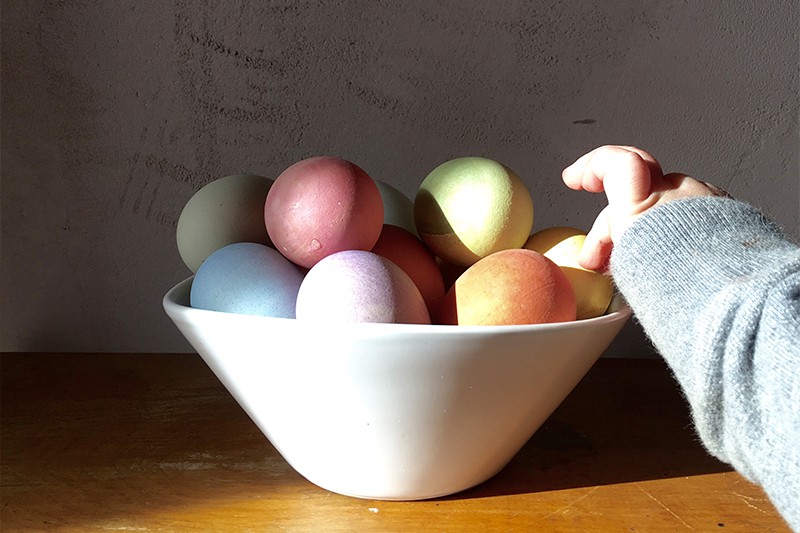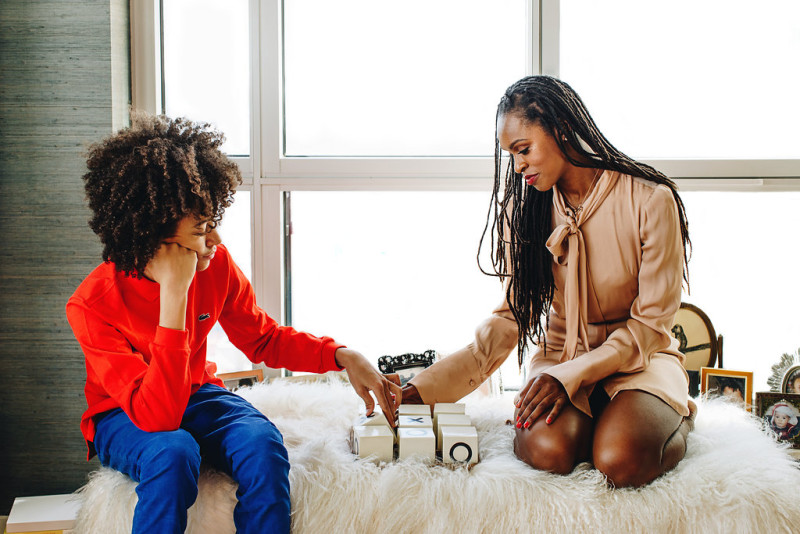
How To Have A Happier & Cozier Family Life, Thanks To The Danish Concept Of Hygge
Written by Jessica Joelle Alexander & Katie Hintz-Zambrano
Photography by Miko Bowen, Photographed by Jessica Kettle, Clothing by Old Navy
One of the hottest trends around the globe this year is the Danish concept of hygge (pronounced hooga). Defined as “coziness and comfortable conviviality that engenders a feeling of contentment or well-being,” there are now numerous books on the subject that describe hygge as lighting candles and wrapping up in cozy blankets with cups of hot chocolate and warm tea. While these descriptions are good examples of what hygge looks like on the outside, there is so much more to this concept than meets the eye. True hygge is a feeling experienced together, on the inside. That’s why it’s not an exaggeration to say that the power of hygge can transform your family’s life.
To learn more about this concept, we dialed up Jessica Joelle Alexander, the co-author of The Danish Way of Parenting, to be our guide. “As an American journalist, Danish parenting expert, and mom to two half-Danish kids, I’ve spent a lot of time studying—and living with—the concept of hygge,” she says. “What I’ve come to understand is that hygge is much more than simply a warm, cozy physical space. Hygge is, perhaps more importantly, a safe psychological space you enter into with your loved ones. Danes do this naturally because they grow up with hygge as part of their national identity. For us non-Danes, it takes effort and awareness to create it, but the payoff is truly powerful.”
The “we-fulness” that hygge creates in Danish families and communities, she explains, is one of the reasons the country consistently ranks as the happiest on earth. To find out how you can easily implement the practice with your little ones at home, read Alexander’s 5-step guide below.
1. Take the hygge oath. You can download it here and find it in The Danish Way book. The oath includes guidelines like lighting candles, shutting down your devices, telling feel-good stories, playing games, and adopting an overall positive attitude, and it’s a great reminder and conversation piece for the whole family on how to implement the hygge rules both mentally and physically. We suggest taping it to your refrigerator.
2. Get outside and play together. Danes say “there is no bad weather, there is only bad clothing.” They love to play outside together as a family in any time of year. This could be building igloos in the snow, throwing a ball around, or building a fire together to cook something. The important thing is that everyone joins in as a team. When you see children playing well together, sharing, or helping out, make sure to praise accordingly! “You guys did such a great job collecting that wood together!” or “I love how you helped your little brother with his marshmallow.” Collaborative praise fosters we-fulness and, with practice, operating as a team for hygge becomes second nature, for both parents and kids.
3. Stay inside and make bath time extra cozy. Many moms these days are stressed out for a myriad of reasons and find it difficult to switch off. One way to practice hygge is to run a bath and shut the door both physically and mentally. Outside of that door, make a conscious effort to leave your stresses, your worries, and to-do lists. You can worry any other time, but for this moment you want to consciously focus on your little ones, with no interruptions or anxious noise. Light some candles, warm some fluffy towels, and play a bit of classical music. All of this will contribute to the visceral feeling of hygge and help you be in that space mentally. The bath becomes a psychological safe haven where you can truly be present. If you do this regularly, children begin to know that in those moments, it’s hygge time and they absolutely love the connection with you!
4. Create technology-free zones. It’s difficult to be “we-ful” if you are checking your phone every five minutes or if you are aware of your phone being close by. Set some fixed times for hygge when you turn your phones and screens off. Try taking a walk outside or sharing a cup of hot chocolate to talk about your family’s day. Phones, tablets, and TVs ultimately distract kids and parents from being truly present. It’s so simple, but with a little bit of awareness and presence, the difference is a powerful one.
5. Simply bake together. Danes love to bake. And they love to keep it simple. They don’t make the fanciest cupcakes in town, nor do they bake gluten-free, banana-nut, mocha-infused bran muffins. In America, all of the baking choices can be overwhelming. In Denmark, it’s more simple. For example, Danes like to bake rolls for breakfast on weekends. These are made with flour, milk, and eggs—that’s all. It’s wonderful kneading the dough and rolling it out as a team. The key here is that baking is completely stress-free, for both moms and kids—so you can enjoy the moment and be fully present. Kids don’t really care about fancy cupcakes, but they do care about being in the moment with you. Put on some woolly socks, light some candles, play some music, and keep it simple.
Remember that it’s the stress-free presence of mind and connectedness that matters most in hygge. It’s “we time” not “me time.” That is the real secret ingredient for non-Danes, but everyone has to be aware of it to make it work. Your children will learn from your example and hygge becomes a legacy that gets passed on through generations. Judging by the happiness reports year after year, the proof is in the pudding—or the breakfast rolls—hygge works!
This post is brought to you by Mother + Old Navy.
Share this story




